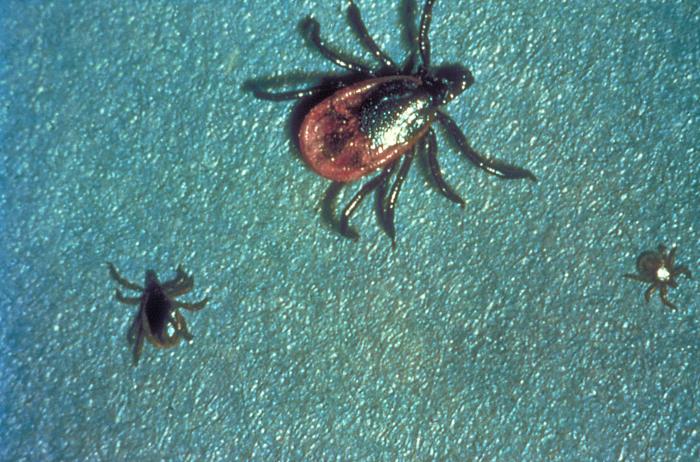Toronto Public Health has seen an increase in the number of cases of Lyme disease acquired in the Rouge Valley area and is reminding residents to protect themselves against blacklegged tick bites and Lyme disease.

“Avoiding tick bites and getting early treatment can prevent serious illness from Lyme disease,” said Dr. Eileen de Villa, Toronto’s Medical Officer of Health.
The blacklegged tick (also commonly known as the deer tick) is the only type of tick in Ontario that can transmit Borrelia burgdorferi, the bacteria that causes Lyme disease, and it is found in many parts of southern Ontario.
LISTEN: The history behind the Lyme disease controversy and what’s new in Lyme research
In Toronto, the Rouge Valley area, Highland Creek Park, Morningside Park and Algonquin Island are where blacklegged ticks are most commonly found but it is possible to find these ticks in other parts of the city. Blacklegged ticks are rarely found on lawns, mowed grass, sports fields or paved areas.
Residents can reduce the risk of being bitten by a tick by taking precautions during outdoor recreational activities or while doing yard work in bushy or wooded areas where ticks may be found:
• Use insect repellent containing DEET or icaridin, which are safe and effective for avoiding tick bites. Follow the manufacturer’s instructions for application.
• Wear long pants, long sleeves and light-coloured clothing that may make ticks easier to spot.
• After returning indoors, check your full body and head for attached ticks and shower to remove ticks before they become attached.
• Remember to also check your children and pets for ticks.
• Keep your property tick-free by mowing the lawn regularly and removing fallen leaves, brush and weeds from the edge of the lawn.
LISTEN: Lyme disease, Stevia and the quest for better treatments
Transmission of the Lyme-disease-causing bacteria usually requires the tick to be attached for at least 24 hours. Prompt removal of ticks from the skin will help prevent infection. If the tick was attached for 24 hours or more, a doctor may prescribe an antibiotic to prevent Lyme disease. The antibiotic must be taken within 72 hours from the time that the tick was removed. Individuals should contact a health care provider if any symptoms of early Lyme disease develop within 30 days of removal of the tick and the tick was attached for 24 hours or more. Detected early, Lyme disease is usually successfully treated with antibiotics.
LISTEN: A new Lyme disease test: Dr Richard Marconi discusses the GLD Test
Early symptoms of Lyme disease usually occur within one to two weeks, but can occur as soon as three days or as long as a month after a tick bite. Symptoms include:
• fever and chills
• headache
• muscle and joint pains
• fatigue
• stiff neck
• a circular rash (also known as a bull’s eye rash).
LISTEN: Powassan virus: The spread is inevitable
“Through our surveillance programs, we monitor tick populations in the city,” said Dr. de Villa. “We post signs in areas where we know ticks are regularly found, inform the public of ways to prevent tick bites and alert health care providers of where ticks are regularly found, and provide them with information on how to diagnose and treat Lyme disease.”
Related:
- CSU test differentiates Lyme disease from STARI
- Lyme disease vaccine candidate granted Fast Track designation
- Lyme disease: University of Guelph receives grant to create lab
- Lyme disease: Global Lyme Diagnostics announces new test is available
- Lyme disease expert talks diagnosis, treatment and ‘chronic Lyme’
- Lyme Madness author, Lori Dennis, for the full show
- Lyme discovery: Borrelia bacteria hides inside parasitic worms, causing chronic brain diseases



